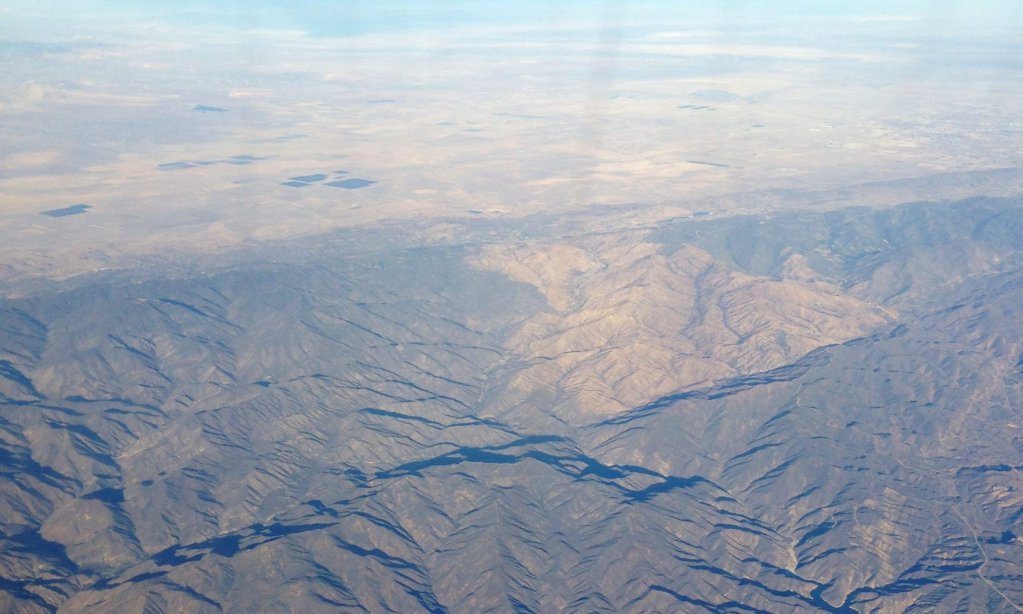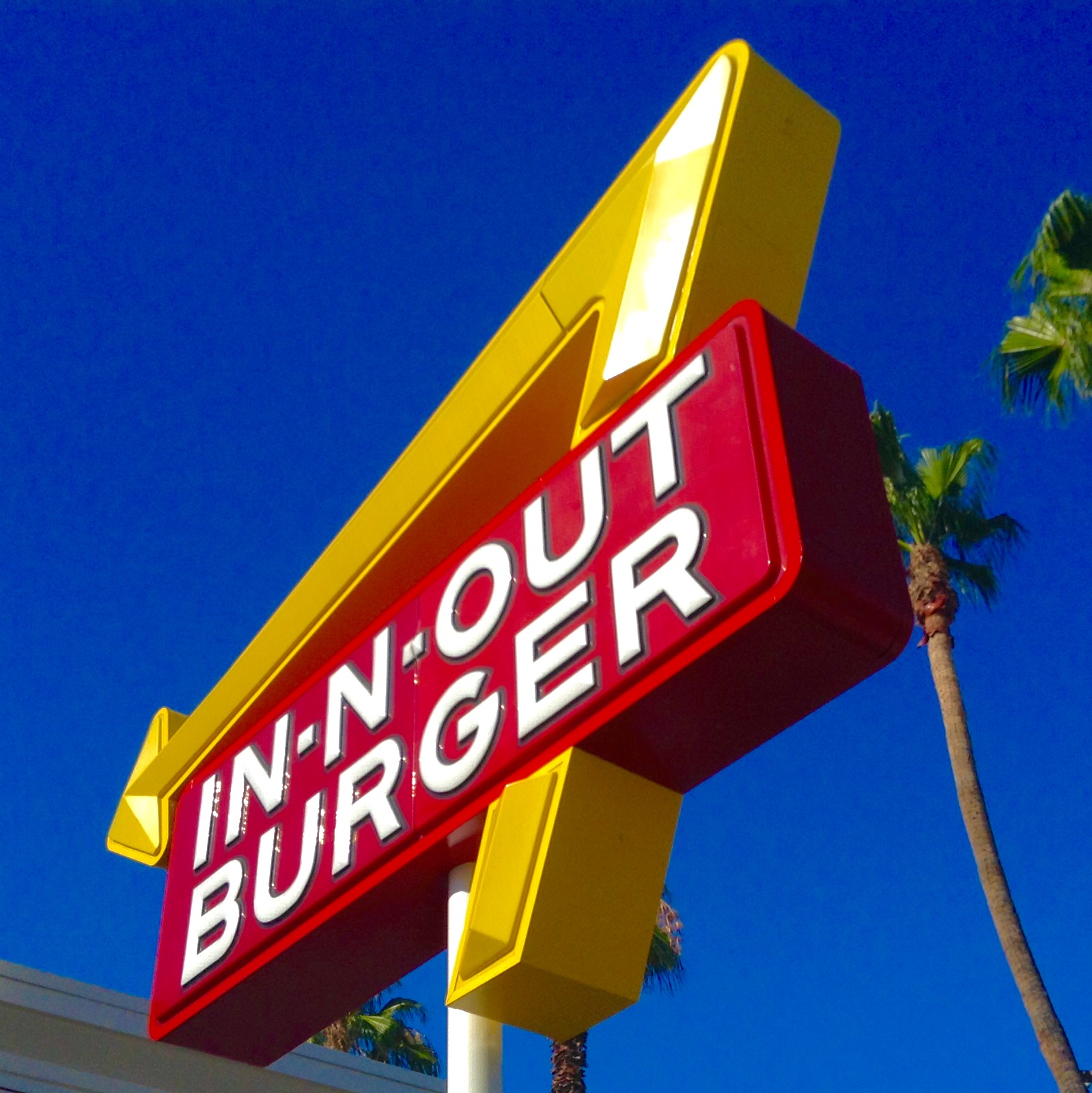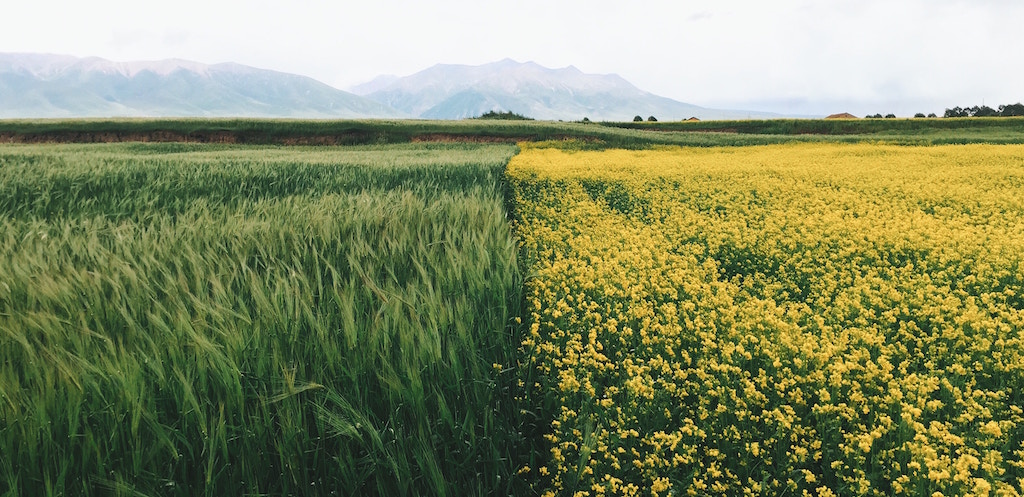At Organic Valley’s headquarters in La Farge, Wisconsin, drought seems a world away. The facility sits on the banks of the Kickapoo River, where fresh water, says Jonathan Reinbold, sustainability manager for the farmer-owned dairy cooperative and manufacturer, “flows all around us.” In fact, he wagers that residents of flood-prone towns along the river’s course lose more sleep over water’s abundance than its scarcity.
If only he could say the same for Organic Valley farmers in states like Texas, New Mexico, and California, where drought has reigned for years. “For them,” Reinbold says, “the next rainfall is not a certainty.” As some co-op members reduce herd sizes for lack of forage and others have to leave the cooperative entirely, he’s noticed an ominous theme emerging—namely, that water scarcity “is and always will be an issue of concern for our farmers.”
It’s not just farmers who need to be concerned. As the drought drags on, any brand that relies on milk, meat, fruits, vegetables, nuts, grains, eggs, or other ingredients produced in a drought-afflicted state—and any brand that is produced in one of them—is at risk. In practice, that means almost any brand. And as the new normal of limited water forces food producers to adapt, it’s driving processors to adapt with them. Nowhere is that more true than in that gem of American food production: California.
This year’s precipitation levels have been somewhat higher due to El Niño, but California is still at a net deficit. These blooming poppies are one sign of this year’s rains
California holds a unique position in the American food system. USDA calls it the lead supplier of more than 99 percent of the nation’s almonds, artichokes, dates, figs, raisins, kiwifruit, olives, cling peaches, pistachios, dried plums, pomegranates, sweet rice, and walnuts. More than 3,000 food processors are currently registered there.
And California is exceptionally hard-hit by water problems. Upwards of 70 percent of the state is now in “extreme” drought, while almost half the state struggles under “exceptional” drought—the most severe category that the U.S. Drought Monitor measures. That catastrophically dry area comprises much of the San Joaquin Valley and Central Coast district, which together produce more than three-quarters of California’s fruit and tree nuts and almost 70 percent of its vegetables on a farm-value basis, according to 2015 county agricultural commissioners’ reports.
The impact here has been enormous. The University of California–Davis Center for Watershed Sciences estimated that drought cost California’s agricultural sector $1.84 billion and 10,100 seasonal jobs in 2015. But that climate is undergoing such an upheaval that California Governor Jerry Brown issued a first-ever executive order in March 2015 mandating statewide water reductions of 25 percent from 2013 levels. The 31-point Executive Order B-29-15 hits everyone from golf courses and municipalities to shopping malls, farms, and—yes—food processors.
Things may look better this year as El Niño drapes a wet blanket of storms across the Pacific Coast. But don’t be fooled: this drought isn’t dead yet. “While we’re receiving quite a bit of precipitation thanks to El Niño, we’re still facing a deficit in our total water supply,” says Edward Spang, PhD, assistant professor of food science and technology, at UC–Davis. And indeed, a recent study published by Stanford scientists shows that the atmospheric conditions that produce drought in California—especially high-pressure “ridges” that divert storms away from the state—have increased in recent years.
Farmers and producers need to start planning for the very real possibility that drought is going to become California’s norm.
Unfortunately, there’s no simple, single path to saving water on food production. “This is a pretty big sector and pretty diverse, so it’s hard to speak monolithically about everybody,” notes Rob Neenan, president and CEO of the California League of Food Processors (CLFP).
CLFP conducted a survey that catalogued both the current status of water-efficiency measures among food processors, and uncovered opportunities for additional conservation via recycling and reuse strategies. The survey report lists dozens of techniques covering every aspect of plant operation, from cleaning surfaces (“Sweep and use squeegees to remove solid waste, in place of using a hose”), to cleaning produce (“Use vibration and air to help clear fruit and vegetables of debris and dirt before fluming or washing”), to the specifics of processing various products (“When concentrating food and juices, use filtration and membrane processes as an alternative to thermal/steam operations”).
What becomes clear is that, as Neenan puts it, “a freezer plant is different from somebody drying grapes for raisins versus somebody making a pasta sauce.” Some operations, he explains, such as those that have to wash raw agricultural product or do more sanitizing of the facility, will be thirstier than others. Any set of best practices for reining them in must be equally diverse—not to mention developed through onsite audits and analysis.
 CLFP
CLFP The CLFP study examined water use across the California processing industry and included an analysis of barriers to increased efficiency
That is what happened at Petaluma-based Amy’s Kitchen, a company that has managed to get a few steps ahead of the game in preparing for chronic drought. The process began several years ago. “We started getting serious around the question of water,” says Timothy Griffin, the company’s sustainability manager. “It’s actually quite complex when you try to figure out: where is the water going?’”
The Amy’s team embarked on its own water-saving journey in partnership with the city of Santa Rosa, which helped launch the voyage by drawing up a water-balance report for the company’s facility there. Among the recommendations: improve submetering. Amy’s already had several large meters that provided “some semblance of an idea where the water was going,” Griffin notes, “but it was a very fuzzy picture.” Once Amy’s installed submeters, it succeeded in isolating the units and processes guzzling the most water, making it possible for the company to devise strategies to eliminate excess use.
A key finding was that 40 to 50 percent of the water in the company’s system resides in the product itself and often ultimately gets steamed or cooked off. And in that case, Griffin says, “There are things we can do to recapture that water for other uses, so there are opportunities there.” Other opportunities lie in close-to-the-ground actions like mulching the grass in the facility’s lawn, converting to drought-tolerant landscaping, and switching to low-flow toilets in the company’s bathrooms.
The biggest sink the team found, though, was sanitation. “And that was where we really looked hard at how we were doing things,” says John Paneno, Amy’s director of sourcing. Cutting water use for those purposes required extra care to ensure that any changes “didn’t impact the food-safety methodologies that we had in place,” he says.
At this point, Griffin says, “We’re grappling with bigger interventions that are more capital intensive and require us, in many cases, to change how we cook product and implement new processes.” Whether that means intermittently shutting down production or tweaking cooling systems, the choices inevitably involve tradeoffs. “So you’ve got a real balancing act, especially for these bigger interventions that we’re committed to.”
Consider the challenge of reducing water use without jeopardizing the taste, look, and feel of the finished product. Griffin notes that the company is considering “several systems specifically around how we cool the product, which is indeed part of the cooking process and can influence product quality”—possibly compromising texture or flavor if allowed to proceed too quickly. Incremental water-use reductions also have the potential to raise energy costs; fortunately, some interventions available to Amy’s actually help manage both, like a chilling system that stores ice overnight when demand is low and uses the stored energy to cool water later.
 California Drought Monitor
California Drought Monitor California drought status, April 5, 2016
But drought watchers agree that absent major cuts from agriculture, any water-use changes that other processors make will be the proverbial drop in a bucket. “Much of the food and beverage industry’s water footprint is the on-farm footprint of its supply chain,” Griffin points out.
Ultimately, individual farmers control whether that on-farm footprint shrinks or grows. But processors, as Griffin notes, “can be influencers with those we work with.” For example, Amy’s encourages its farmers to drip irrigate the crops, such as tomatoes, that are suited to the method. “With drip, you’ve got way better control of where the water goes,” says Paneno. Drip irrigation helps control weeds, too. Indeed, Griffin mentions studies showing that if all agricultural systems that could shift to drip irrigation did, “we could cut ag water use by 60 percent, 70 percent,” he says. “It’s a staggering number that one change could make globally.”
One California crop that has changed its irrigation practices thanks to a fusillade of public criticism is almonds. Citing data from the California Department of Water Resources and California Almond Sustainability Program, the Almond Board of California (ABC) in Modesto, Calif. claims that more than 70 percent of almond orchards report using water-saving micro-irrigation systems—well above the average for the state. More than 80 percent of growers also report using demand-based irrigation, which enables growers to tailor irrigation schemes to fit weather, soil moisture, and tree needs rather than holding them to a predetermined schedule. These and other changes, the ABC says, have helped almond growers reduce the amount of water required to yield a pound of almonds.
And Paneno points out that, especially when they follow an organic model, such efforts pay dividends way beyond water-use reduction. “Water conservation and being organic just go hand in hand in the sense that if you focus the water where it needs to go, you’ll eliminate weed pressure,” he says. And when growers keep more organic matter in the soil—as organic growers do—that soil retains more water. “So just by using organic methodologies, farmers get a lot more water in the soil close to the roots.”
Blooming almond trees. The Almond Board of California claims that more than 70 percent of almond growers are using water-saving micro-irrigation systems
But ultimately manufacturers face a bottom-line reality: “There are so many different projects you could do, but you have to find ones that have good rates of return,” says Neenan. Yes, food manufacturers want to do their part, but “some of this is going to be shaped by cost.” In the end, that may not be such a bad thing.
After all, if consumers are sufficiently exercised to pay more for products that minimize their water footprints, it will encourage processors to incur the costs of minimization. “Most food companies selling into retail distribution are getting requests from their buyers, grocery stores, consumers, and others on ‘What’s your sustainability program?’ And really, most major food manufacturers have some sort of resource-sustainability program, whether it’s for water or energy or other inputs.”
Nennan notes that his organization spent the past several years working with both the California Energy Commission and Public Utilities Commission to monitor the water-energy nexus through facility audits and provide incentive funding to reduce water footprints. “There isn’t really a great pool of money out there for companies to use in making these retrofits,” he says. “And some are just doing it on their own. But it certainly would induce more change if there were some sort of matching funds available.”
Even more practically, in some parts of California the cost of water itself has been rising exponentially. “And if you use water,” Neenan adds, “you most likely have wastewater discharges” and their concomitant fees, as well. “California has one of the highest energy costs in the country for manufacturing facilities,” he notes. “So the less water you’re using, the less energy you’re expending on moving it around.”
In the end, Neenan says, “The food business is pretty competitive. A lot of people fall by the wayside. I think that if you’re wasting resources—water, energy, capital, or packaging—you’re probably not going to be around really long.” Canned tomatoes and frozen spinach aren’t high-margin items. “So no matter what the regulatory landscape looks like,” Neenan says, “companies have to mind their resource use to remain competitive.”
Of course, that doesn’t mean that regulations don’t matter, and Neenan insists that local dialogue is key. “It’s pretty difficult for an agency in Sacramento to tell a water agency in Southern California—let alone somebody making noodle bowls in that community—how much water they should or shouldn’t be using. From my perspective, you present them with tools: benchmarks, data, best practices.”
And you hope that processors use them. Like Amy’s. Saving water is “part of our mission and vision of providing value to our customers,” Griffin says. But they approach their task humbly. And they know that even with the winter rains, they’ve got their work cut out for them. As Paneno’s ag manager once warned him, “Don’t get too comfortable.”













